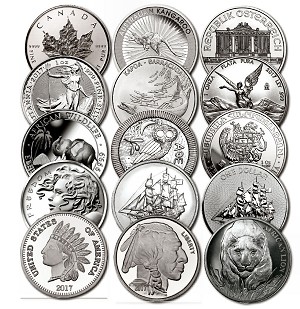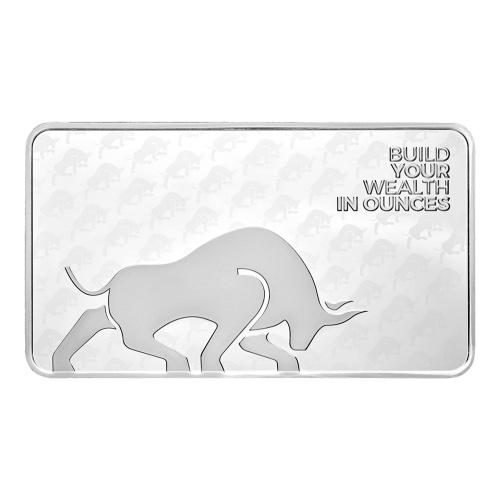Silver eagle prices are consistently higher per ounce than generic rounds. Investors that are new to buying silver and other precious metals are often confused by the prices of what seem to be the same or similar items. At the end of the day both are still 1 troy ounce of silver.
Some of this confusion is due to the lack of transparency from dealers who rely on customers paying high premiums over spot price to pad their profit margins.
After all, isn’t 1 troy ounce of silver bullion the same no matter who makes it? Whether it is a generic bullion round from a private mint like the Sunshine Mint, or a 1 oz American Silver Eagle coin.
So why are silver eagle prices higher?
The US Mint is responsible for the minting and manufacturing of American Silver Eagle coins. There is a cost to to manufacture and distribute Silver Eagles.
To recover the manufacturing and distribution costs the US Mint charges wholesale distributors, referred to as “Authorized Purchasers”, a $3.50 premium on every newly minted Silver Eagle. The added premium by the Mint is passed along by the dealers to the end buyer or investor as part of the cost.
Silver Eagles Dealer Price
The Silver Eagle price from online bullion dealers is based on the spot “Ask” price, plus the dealer premium that includes costs from the wholesaler and the US Mint.
The markup per Silver Eagle coin can range from $3.00 to $6.00 over spot price. Depending on the current spot price, this premium range is 10%-25% over spot per ounce.
You can save money on dealer premiums if you buy Random Year Silver Eagles. Random Year coins come from the secondary market or from dealer buy backs from investors. Since dealers will buy back Silver Eagles at a lower premium than is charged by the US Mint, the savings is passed along to investors.
How much over spot should i pay for silver eagles?
American Silver Eagle coins always carry a premium over spot price. Current year coins will typically have the highest premium because the US Mint charges Authorized Purchasers (Wholesale Distributors) a premium that covers the sourcing, manufacturing, distribution and marketing. The premium charged by the US Mint ultimately gets passed along to the investors and silver stackers.
American Silver Eagle coins from previous years will have a slightly lower premium than current year coins, depending on dealer inventory.
Older American Silver Eagle coins that are in uncirculated condition often carry a premium as they are considered semi-numismatic because they are dated. However, aside from specific years where the mintage of Silver Eagle coins was limited such as 1996, back-dated coins have little to no numismatic value. They are simply silver bullion coins.
Silver Eagles that are in circulated, tarnished or cull condition will have the lowest premiums. These coins may show some signs of wear and tear from handling such as scratches, dings or surface marks. They may also show signs of tarnish from being exposed to air, have smudges or may have been painted with enamel or acrylic paint. Even Cull Condition or tarnished Silver Eagles will maintain their value relative to spot price, often carry a premium above spot price on the secondary market.





